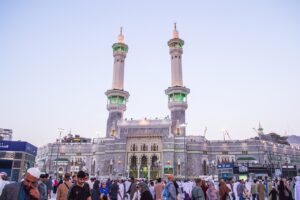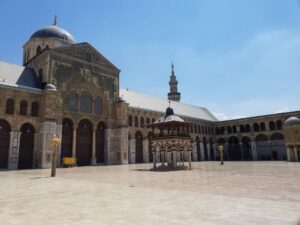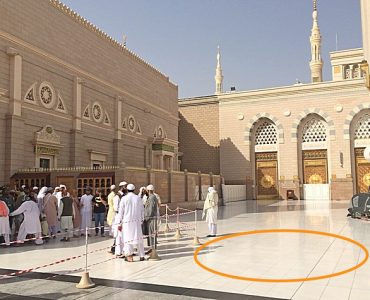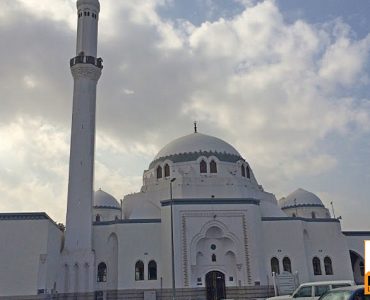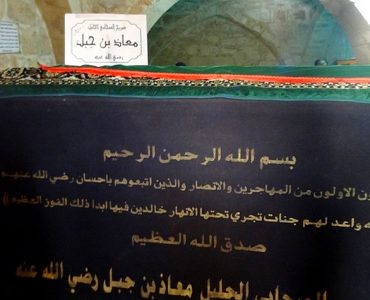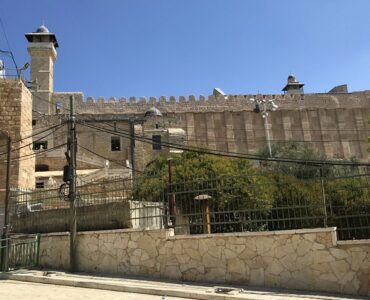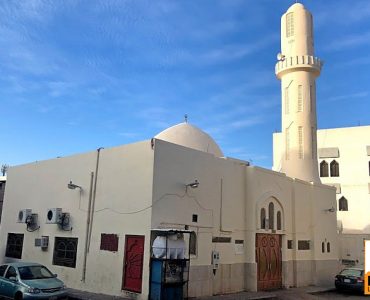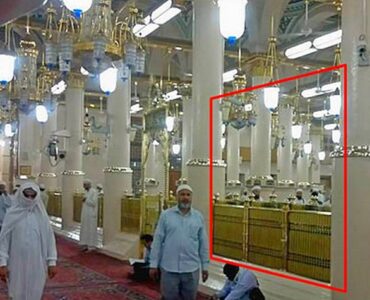Did you know that there are over 3.6 million mosques in the world? Serving as a spiritual, social, and educational hub for the Muslim community, mosques are the primary place of worship and extension of the House of Allah SWT.
Mosques enable Muslims to come together and pray in congregation, particularly for the Friday prayer (Jumu’ah), which holds special significance in Islam.
The congregational aspect of prayers fosters a sense of unity and community among believers.
These sacred spaces symbolise the identity of Muslim communities, representing the religion of Islam and showcasing the spiritual and cultural heritage of Muslims.
In this article, we will be exploring 13 of the oldest mosques in the world.
Keep reading to learn details about the most sacred sites of worship in Islam and excellent destinations for halal travel.
First Mosque in the World
The foundation of the first mosque built was laid way before Prophet Muhammad (PBUH) started preaching Islam in the era of Prophet Ibrahim (AS).
Is Masjid Haram the First Mosque on Earth?
Yes, Masjid Haram is the first and one of the oldest mosques in the world. Allah SWT in the Holy Quran says, “The first House (of worship) appointed for man was that in Bakkah (i.e., Makkah): full of blessing and of guidance for all the worlds.” [Holy Quran, Al ‘Imran, 96]
Abu Dhaar (RA) narrated, “I said, “O Allah’s Messenger (PBUH)! Which mosque was built first?” He replied, “Al-Masjid-al-Haram.” I asked, “Which (was built) next?” He replied, “Al-Masjid-al-Aqsa (i.e. Jerusalem).” I asked, “What was the period between them?” He replied, “Forty (years).” He added, “Wherever the time for the prayer comes upon you, perform the prayer, for all the earth is a place of worshipping for you.” (Sahih Bukhari)
Situated in Makkah, Saudi Arabia, Masjid al-Haram is significant landmark for Hajj and Umrah visitors. It spreads over 88 acres (356,000 square metres) of land and has a capacity of 2.5 million. Also called The Great Mosque, Masjid Haram is the Qiblah (direction of prayer) and surrounds the Holy Kaaba, the foundation of which was raised by Prophet Ibrahim (AS) and his son, Prophet Ismail (AS) as stated in the Holy Quran, “And ˹remember˺ when Abraham raised the foundation of the House with Ishmael, ˹both praying, ˺ “Our Lord! Accept ˹this˺ from us. You are indeed the All-Hearing, All-Knowing.” [Holy Quran, Surah al-Baqarah; 2:127]
Masjid al-Haram is the holiest site in the world, and every year millions of Muslims visit The Great Mosque to perform pilgrimage (Hajj and Umrah).
Since its construction, Masjid Haram has been rebuilt, remodelled, and renovated several times to accommodate the ever-increasing number of Hajj pilgrims and provide facilities to visitors.
Stating the reward of praying in Masjid al-Haram, Prophet Muhammad (PBUH) said, “One prayer in this mosque of mine [in Madeenah] is better than a thousand prayers in any other, except the Sacred Mosque [in Makkah], and one prayer in the Sacred Mosque is better than one hundred thousand prayers anywhere else.” (Sunan Ibn Maajah: 1406; Musnad Ahmad: 14694)
Second Oldest Mosque in the World
Built between 692 and 705 CE by Prophet Sulaiman (AS), Masjid al-Aqsa is believed to be the second oldest mosque in the world.
Located in Palestine, Old City of Jerusalem, Masjid al-Aqsa was Islam’s first Qiblah (direction of prayer) and is spread over 144,000 square metres of land.
On the night of Miraj, Prophet Muhammad (PBUH) was brought to Masjid al-Aqsa to lead the Salah of all Prophets before ascending to the seven skies to meet Allah SWT.
“Exalted is He who took His Servant by night from al-Masjid al-Haram to al-Masjid al-Aqsa, whose surroundings We have blessed, to show him of Our signs. Indeed, He is the All-Hearing, the All-Seeing.” [Holy Quran, 17:1]
Masjid al-Aqsa is the burial ground of many Prophets and is home to some of the most sacred religious landmarks.
The Farthest Mosque also has courtyards, a library, and separate prayer rooms for men and women.
Quba Mosque
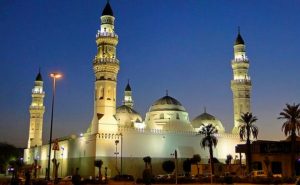

Situated approximately 3 kilometres outside of the city of Madinah, Saudi Arabia, Masjid Quba is one of the oldest mosques in the world.
Built by Prophet Muhammad (PBUH) and his beloved companions after migration to Madinah in 622 CE (1 AH), Masjid Quba is where the first Friday prayer was held.
With a capacity of over 20,000 worshippers, Quba Mosque has four parallel minarets, 56 mini domes, three central cooling areas, seven main entrances, and 12 secondary entrances.
The Messenger (PBUH) of Allah SWT said, “Whoever purifies himself in his house, then comes to the mosque of Quba and prays in it, he will have a reward like the Umrah pilgrimage.”
Ibn Umar narrated: “The Prophet (PBUH) used to go to the Mosque of Quba (sometimes) walking and sometimes riding.” Added Nafi (in another narration), “He then would offer two Rakat (in the Mosque of Quba).” [Sahih Al-Bukhari]
Masjid al-Nabawi
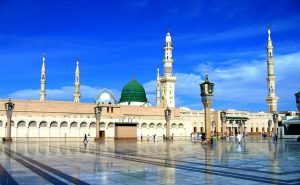

Established by Prophet Muhammad (PBUH) in 622 CE, Masjid al-Nabawi is the second-largest mosque built in the world and the largest mosque in Madinah, Saudi Arabia.
Commonly known as the Prophet’s Mosque, Masjid al-Nabawi covers 8.67 square metres of land and has a capacity of 1000,000.
It is the resting place of Prophet Muhammad (PBUH), Prophet Abu Bakr (RA), and Prophet Umar (RA).
Masjid al-Nabawi has three mihrabs and is landmarked by its grass-green-coloured dome and white walls.
The Mosque of Prophet Muhammad (PBUH) comprises a community centre, prayer hall, library, spiritual school, and court of law.
About visiting Masjid Nabawi, Prophet Muhammad (PBUH) said, “Whoever visits me after my death is like he who had visited me during my life. When a person stands at my grave reciting blessings on me, I hear it, and whoever calls for blessings on me in any other place, his every need in this world and in the hereafter is fulfilled, and on the day of Qiyamah I shall be his witness and intercessor.”
“One prayer in my mosque is better than one thousand prayers in any other mosque except al-Masjid al-Haram.” (Bukhari: No. 1116)
“Do not prepare yourself for a journey to any mosque [with the intention to earn a special reward of prayers] but the three mosques al-Masjid al-Haram, al-Masjid al-Aqsa, and my mosque.” (Bukhari: No. 1115)
Masjid al-Qiblatain
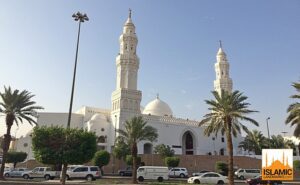

The mosque with two Qiblahs, Masjid al-Qiblatain, is situated in a sacred location: the heart of Medinah, Saudi Arabia.
Masjid al-Qiblatain was built in 623 CE to mark the site where Prophet Muhammad (PBUH) received the revelation to change the direction of Qiblah from Masjid al-Aqsa to the Holy Kaaba, Masjid al-Haram:
“Verily, We have seen the turning of your (Muhammed’s) face towards Heaven. Surely, We shall turn you to a Qiblah (prayer direction) that shall please you, so turn your face in the direction of Al-Masjid Al-Haram (at Makkah). And wherever you people are, turn your faces (in prayer) in that direction.” [Holy Quran 2:144]
Masjid al-Qiblatain can easily accommodate approximately 2000 worshippers at once and is the only mosque with two Mihrabs. Masjid al-Qiblatain’s exterior features traditional motifs and elements and one huge prayer hall.
Great Mosque of Sanaa
Al-Jami al-Kabir bi-Sana, commonly known as the Great Mosque of Sanna, is situated in Sanaa, Amanat al-Asemah, Yemen.
Built in the early Islamic years, the Great Mosque of Sanna is one of the oldest Masjids globally.
The Great Mosque of Sanna was constructed alongside the Ghumdan Palace and has been renovated several times over the years, the first renovation being recorded in the 8th century during the rule of Caliph al-Walid.
Al-Jami al-Kabir bi-Sana has distinctive architectural features. Built with delicate stucco work, wooden ceilings, and intricate patterns, representing ancient Yemeni craftsmanship.
A lesser-known fact about the Great Mosque of Sanna is that it was included on the list of UNESCO World Heritage Sites.
Umayyad Mosque
Raised on a site that originally belonged to a Roman temple and Christian Church, Umayyad Mosque was built 96 years after migration in Damascus, Syria.
After the conquest of Damascus in the year 634 CE, Caliph Walid I renovated the architectural structure of the building, transforming it into a mosque by the year 715 CE.
Withstanding many ruling periods and dynasties, the Great Mosque of Damascus is visited by thousands of Muslims every year.
Umayyad Mosque’s magnificent Dome of Rock highlights the impressive Islamic artistry and showcases the cultural and religious heritage of the world.
Inside the Umayyad Mosque, a plaque is placed over the spot where the head of Imam Husain (RA) was displayed after he was martyred at the site of Karbala.
The Umayyad Mosque covers a large quadrangle 157 by 100 metres (515 by 330 feet).
Oldest Mosques in Africa
From Somalia to Egypt to Ghana and Senegal, Africa has some of the most amazing and oldest mosques in the world. Listed below are the oldest mosques in Africa.
Mosque of the Companions
Built in Massawa, Eritrea, the Mosque of Companions was made in 613 CE. Named Masjid as-Sahabah, the Mosque of the Companions is the oldest Muslim place of worship in Africa.
Masjid as-Sahabah is said to be constructed by Muslims who flew from Makkah to protect themselves from the persecution of the Quraysh. This was after the first pledge of Aqabah.
The Mosque of Companions has simple and classic architecture with four beautiful minibars, a mihrab, and a small dome.
Masjid as-Sahabah covers an area of 3100 square metres, proving the strength of the Muslims who escaped Makkah to find peace in Abyssinia.
Mosque Uqba
Situated in Kairouan, Tunisia, Mosque Uqba was made under the patronage of Arab General Uqba Ibn Nafl.
Renowned for its exquisite beauty, Mosque Uqba is a distinguished example among global Masjids.
The architectural style employed in its construction subsequently became a prevalent influence in the design of numerous subsequent mosques.
Throughout its history, this mosque has functioned as a pivotal hub for Islamic scholars.
Oldest Mosques in Europe
Dating back centuries, the mosques in Europe serve as places of worship and remarkable symbols of cross-cultural exchange and architectural ingenuity. Listed below are two of the oldest mosques in Europe.
Mezquita
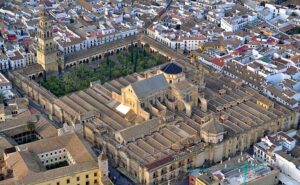

Otherwise named Mosque-Cathedral of Cordoba, Mezquita is another one of the oldest mosques. It is located in the southern region of Spain in Europe.
Originally a church, Mezquita was a shared prayer space for Christians and Muslims before being transformed into a mosque in the year 784 CE.
Mezquita is one of the most popular tourist destinations in Spain today.
The Mosque of Amr ibn al-As, Spain
Built in the 8th century in the Spanish city of Toledo, the Mosque of Amr ibn al-As is considered one of the oldest standing mosques in Europe.
Constructed during the Islamic rule in the Iberian Peninsula, it exemplifies the fusion of Islamic and Gothic architectural elements.
Oldest Mosques in India
India is home to over 300,000 mosques. While most of these mosques are reverted as prayer chambers or religious centres, standing tall, the grand architecture is proof of the power and influence of Islam. Listed below are the oldest mosques in India.
Cheraman Juma Masjid
Built in 629 CE by Malik Dinar (RA), Cheraman Juma Masjid was the first-ever mosque in India. The mosque was built to honour the memory of noble successor Chera King Cheraman Perumal.
Inspired by traditional Kerala architecture, Cheraman Juma Masjid features beautiful hanging lamps and modern halls and corridors.
Cheraman Juma Masjid is situated in the Thrissur district on Paravur-Kodungallur road, Kerala.
Palaiya Juma Palli Masjid
Also known as Meen Kadai Palli or Old Jumma Masjid, Palaiya Juma Palli Masjid is located in Kilakarai, Tamil, India.
Palaiya Juma Palli Masjid was built between 628 AD and 630 AD by trade sellers and Yemeni merchants on the order of Bazan ibn Sasan; after he accepted Islam.
Even though the mosque has a temple-like architecture, it doesn’t have any polytheism (idol cravings) on the walls or pillars.
Palaiya Juma Palli Masjid was rebuilt twice, once in the 11th century and then in the 17th century.
Oldest Mosques in Asia
In this section, we will be discussing some of the oldest mosques in Asia.
Huaisheng Masjid
Founded by Saad ibn Abi Waqas (RA) in 627 CE, Huaisheng Masjid was the first-ever mosque in China.
Also named the Lighthouse Mosque or the Great Mosque of Canton, Huaisheng Masjid has a 36 metres long white-coloured minaret that rises high, pointing towards the sky.
The Huaisheng Masjid has tombs of some of the most important Islamic scholars and Muslims of the time. It is situated on Jiefangbei Road, near the Yuexiu Park Metro Station in China.
The mosque’s architecture is a mix of Arabic and Chinese styles. This mosque is a must-visit even if you are in Guangzhou for a short duration!
Great Mosque of Xi’an
Providing more than 60,000 Muslims a place to worship in China, the Great Mosque of Xi’an was constructed in 742 CE. It is among the oldest mosques in Asia.
The attribute that makes the Great Mosque of Xi’an stand out is that, unlike other Masjids, it has no minarets or domes.
The architecture of the mosque represents the Chinese pagoda style, and the walls feature beautiful Arabic inscriptions.
Summary – Oldest Mosques in the World
From Masjid al-Haram and Masjid Nabawi in Saudi Arabia to the Great Mosque of Xi’an in Asia, exploring the oldest mosques in the world offers invaluable insights into the historical and cultural tapestry of early Muslim communities.
These venerable structures stand as testaments to the enduring spirit of devotion and innovation of Muslims worldwide.
As life continues to move forward, these mosques serve as living reminders of the faith’s inception, inspiring scholars and believers alike to appreciate Islam’s rich heritage and lasting impact on the global stage.
By learning about these historical monuments and opting for halal travel packages, we not only honour the past but recognise the ongoing legacy of unity, spirituality, and creativity that continues to shape the architectural marvels of today


